When a baby cries, what is it saying? Does it want to nurse? To be held, to be changed, to be warmer or cooler? When your dog barks or the cat meows — what does it mean? Even when we don’t speak the same language, in time, we learn to recognize what our loved ones want and need by what they say. The same is true of our succulents. They know precisely what they need in order to thrive. If you listen to your succulents, you’ll learn that they give clear signs of what they want. Read on to learn to recognize the signs of overwatered succulents, underwatered succulents, why your succulent is growing long stems, why they change color, and other signs of succulent problems and needs. Watching for — and acting on — your succulents’ signals will improve your succulent care.
Recognizing Succulent Problems
In this Post We'll Cover:
- Recognizing Succulent Problems
- Signs of Overwatered Succulents
- Signs of Underwatered Succulents
- Signs Your Succulent Needs More Light
- Signs Succulent is in Too Much Light
- Sign Succulent Needs Water & Support
- Why Do Succulents Change Color?
- Signs of Succulent Dormancy
- Signs Succulent Needs More Light, Less Water & Better Air Circulation
- Succulents Wilting & What it Means
{Please note, some links in this post may be affiliate links to sites that pay me a small commission if you click on the link and make a purchase. This commission is at absolutely no cost to you. I only recommend products and companies that I have worked with and truly love! ~Kat}
Signs of Overwatered Succulents
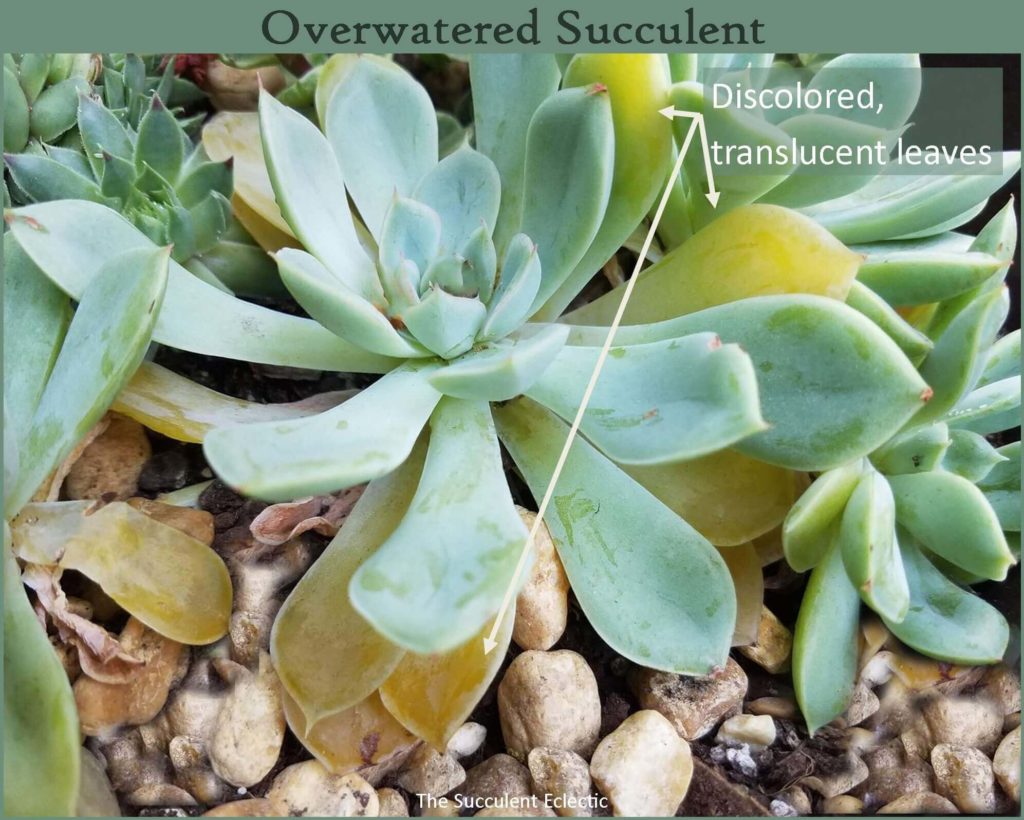
Proper watering for succulents is the single most important part of succulent care. The quickest way to kill a succulent is by overwatering. The water storage cells inside an overwatered succulent swell and burst. It makes the leaves look discolored, yellow and translucent. When this occurs, the damage is irreversible. It’s important to recognize the signs of an overwatered succulent so that you can take immediate action to salvage as much of the plant as possible. When the leaves grow translucent and squishy, that is a clear sign the cell walls have broken and the leaf is full of water. These leaves cannot be saved. However, other leaves that are still healthy can be removed for leaf propagation.
Signs of Underwatered Succulents
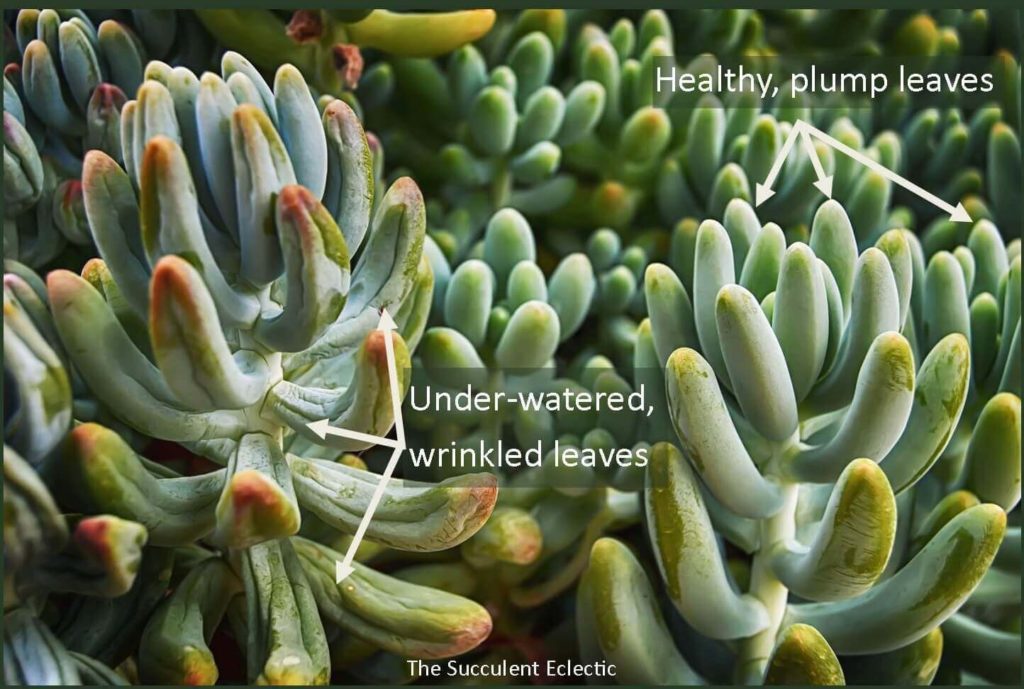
Underwatered succulents are not in immediate danger of death like overwatered succulents. In fact, you can use the signs that signal a succulent needs water as a guide to know when to water your plants. As succulents draw upon their stored moisture, their internal water pressure drops, and the leaves begin to shrivel and become wrinkled.
When you see signs of an underwatered succulent, water thoroughly. While this is not as serious a succulent problem as overwatering, it is still a clear signal that your succulent needs a change in its care.
Signs Your Succulent Needs More Light
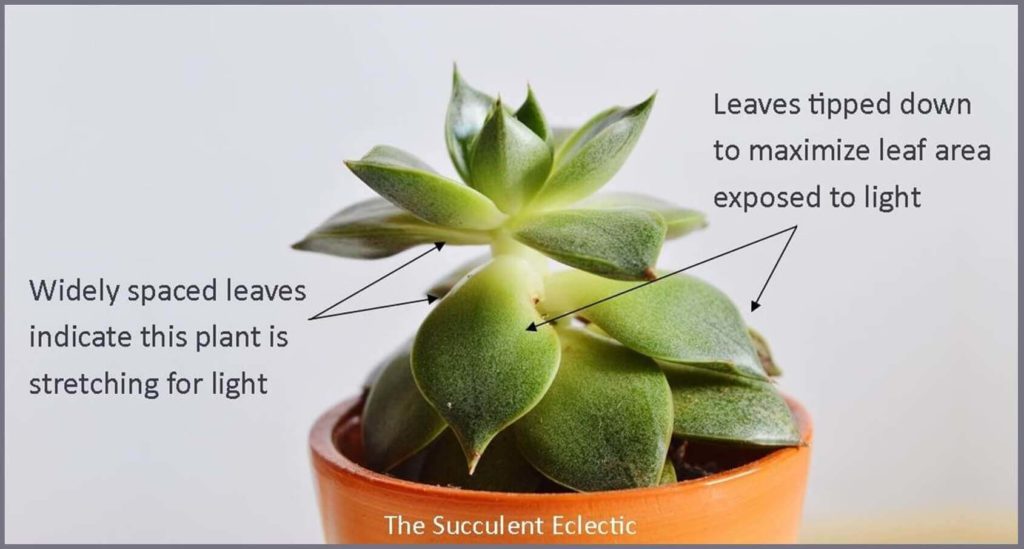
We’ve all seen succulents grow long stems and keel over. That is an advanced form of etiolation — when the succulent is stretching for more light. When your succulent needs light, it first will tip its leaves down to maximize the surface of each leaf’s exposure to the sun. If this change does not garner sufficient light, it will begin to stretch and lean toward the light. Ideally, you’ll make note of the leaves pointing down to move it (gradually!) into more light. Down-tipped leaves will tip up again. But once the plant begins to stretch, it will not be able to correct the stretched growth pattern.
Etiolation is a serious succulent problem that can lead to the death of your plant. Watch for the early signs that your succulent needs more light. If the plants are indoors for the winter, consider getting a succulent grow light.
Signs Succulent is in Too Much Light
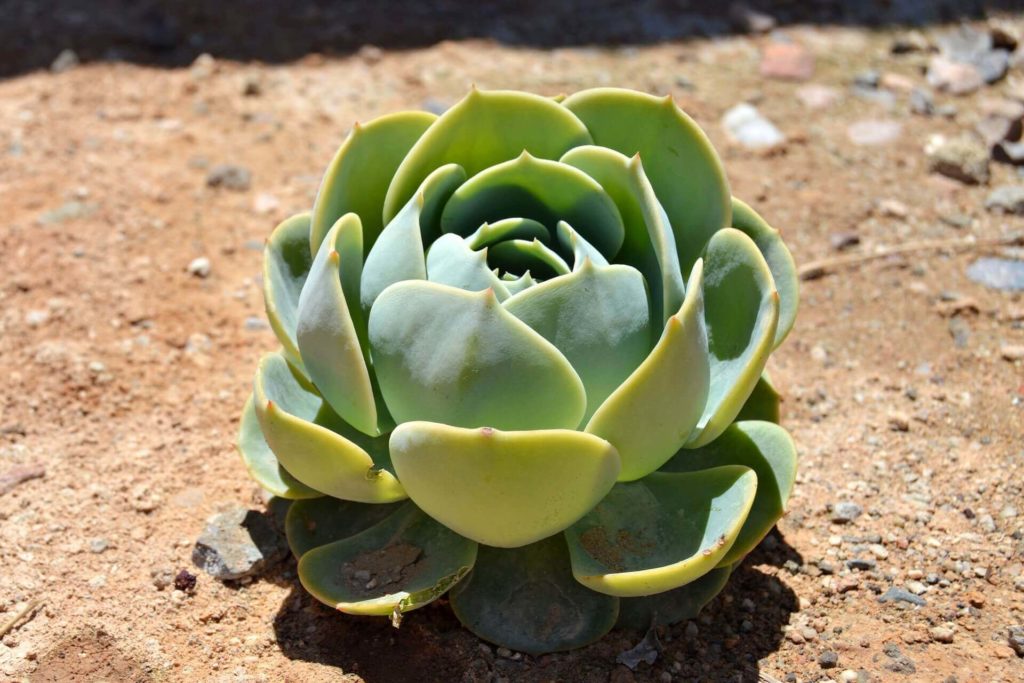
As much as succulents need sunshine, it is possible for them to get too much sun. Succulents can sunburn. When they do, it is at least scarring and can be deadly. Watch for the early signs that your succulent is in too much sun. In the same way that a succulent moves its leaves to capture more light, a plant may fold its leaves up when the sun exposure is too fierce. The echeveria above is not yet scarring. But you can see the leaves are more closed than typical. This is the plant’s way of shading each leaf as much as it can.
Sign Succulent Needs Water & Support
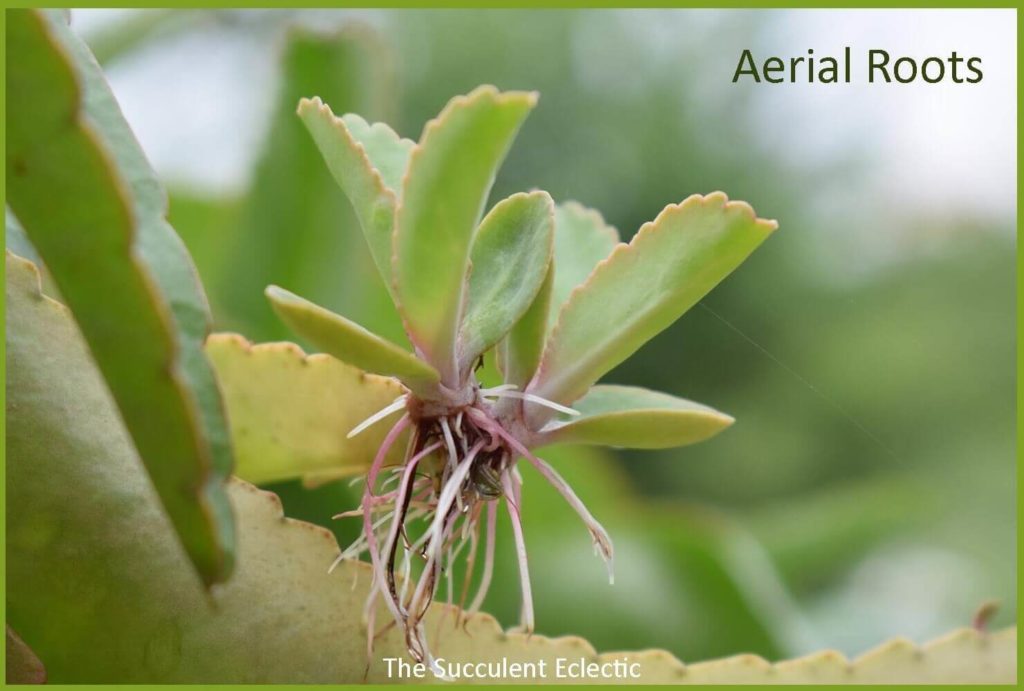
Aerial roots form on succulents primarily to provide more water for the plant or to provide additional support. When a succulent needs more water, in time, it will form roots above the soil line in an effort to collect water molecules from the air. Another main cause of aerial roots is when the plant needs additional anchor points, either because the natural growth habit of the succulent is to form a wide mat, or because the plant is etiolatedA plant is etiolated (EE-tee-oh-late-ed) when it grows very ..., and the tall, leaning stem will soon bend or break to reach the ground. Aerial roots are often a signal that the succulent needs more water or more light.
Why Do Succulents Change Color?
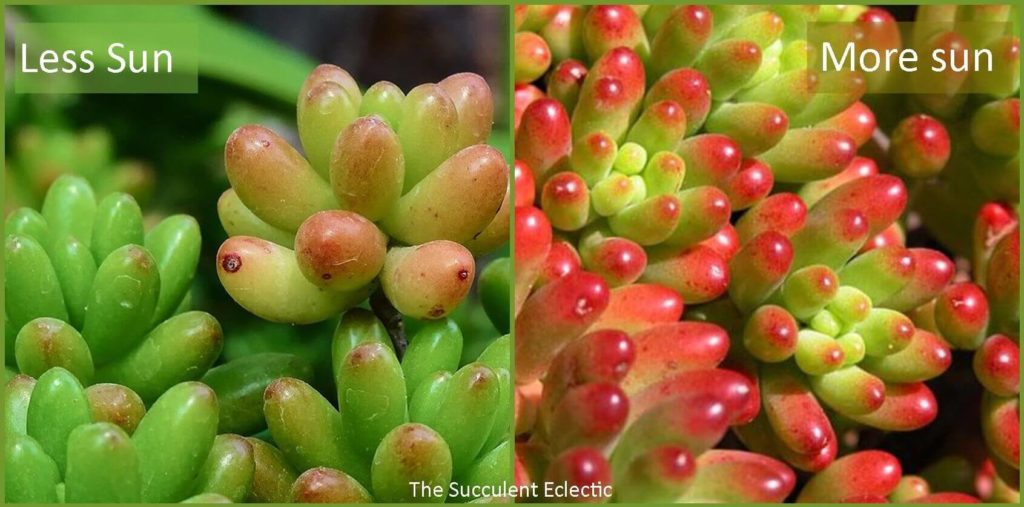
Have you ever brought home a brightly colored succulent you fell in love with — only to have it soon turn green? What about the succulents you have that have begun to flush red or purple?
Stress causes succulents to produce specific pigments to protect them from damage. These pigments make the succulent develop red or purple coloring in response to changes in light exposure, watering or temperature. In the case of
When a succulent changes color, it is not necessarily a sign of a succulent problem. But it is a clear sign of a change in the succulent’s environment, and one you should be alert to. It can be a sign your succulent is underwatered. Or it can be an early warning that the plant could become sunburned. A change in color is a signal to pay attention to what stress is occurring. You can even learn how to safely stress your succulents for more color!
Signs of Succulent Dormancy
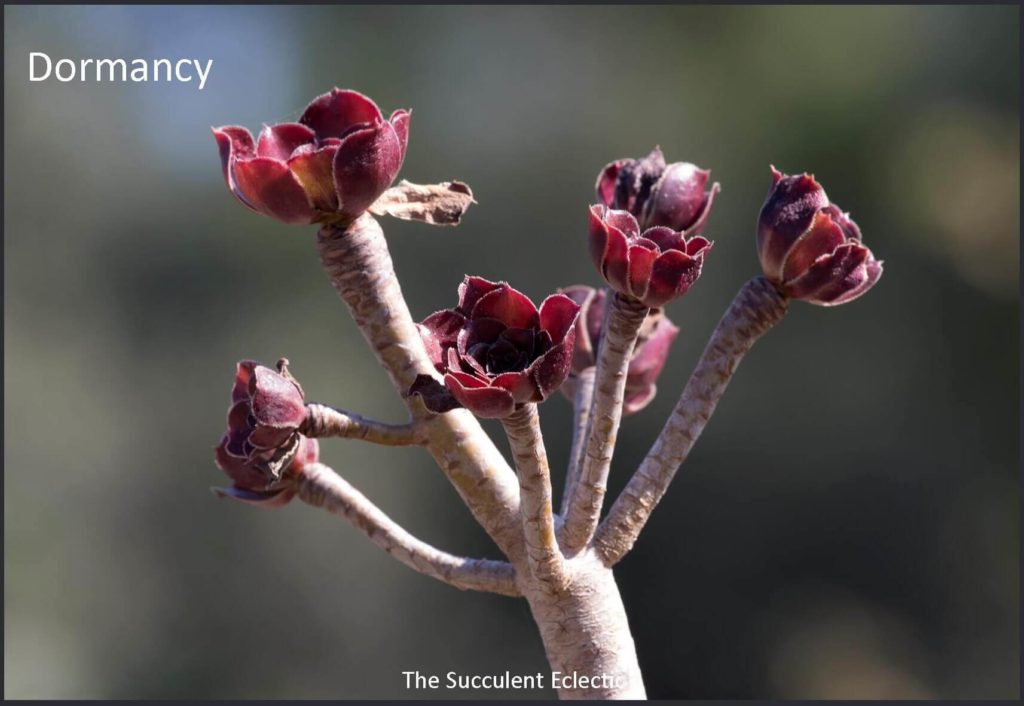
Sometimes the changes in your plant’s appearance just look like a succulent problem, when it really isn’t. When a full, lush Aeonium
Signs Succulent Needs More Light, Less Water & Better Air Circulation
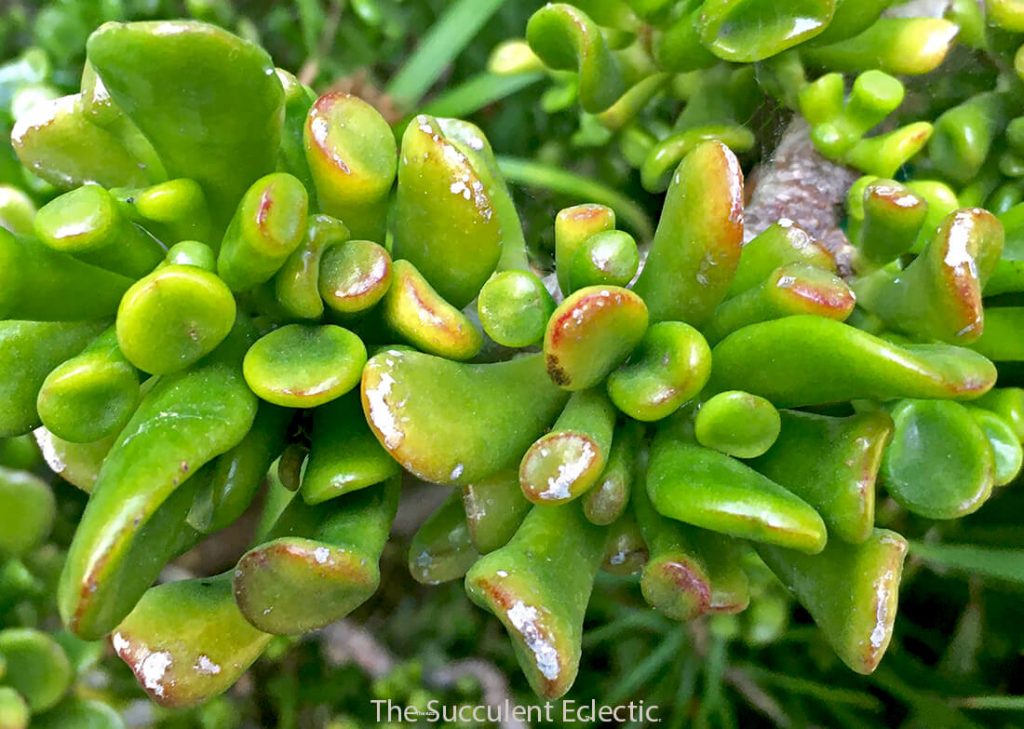
When your succulent gets brown spots, blisters, or cork-like patches on its leaves, they are signs of edemaIn plants, edema (eh-DEE-muh) is a condition caused when a p... More. Succulent edema occurs when the plant’s roots take up more water than the leaves can release. The build-up of water in the leaves causes blisters where the cell walls break under the excess water pressure. Succulent edema is confined to small, localized damage and can occur at any place on the leaves.
Succulent edema is a sign that your plant’s growing conditions are out of balance. It isn’t that you are overwatering, it’s that the plant cannot process and release the water fast enough to keep up with the water supply around the roots. To reassert balance in the local environment, typically, you will need to do a combination of:
- Increase light
- Decrease water
- Improve air circulation
Increasing the light, backing off on the water and improving the air circulation right around your plant will correct the causes of the edema. The blisters are scars, but they will not harm your plant. In time, your succulent will outgrow the scars. But edema is a critical succulent sign that you need to respond to for the health of your plant.
Succulents Wilting & What it Means
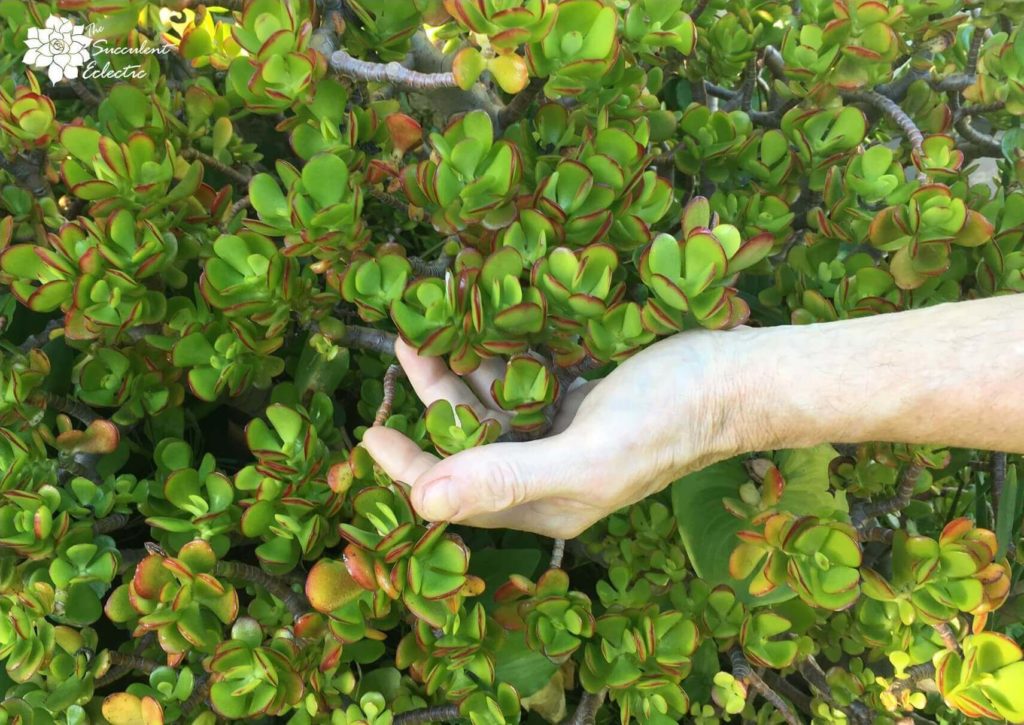
Even before you see the visible signs of succulent problems, like needing more water, more light or shelter from heat, the succulent will feel different to your touch. The sooner you make note of changes in your succulent, the better you can adjust your care so it is not damaged. Monitoring your succulent’s health by touch is a great way to key into the early warning signs. Even before the plant changes color or develops aerial roots or the leaves wrinkle to signal it’s an underwatered succulent, the leaves and stems will begin to feel limp and loose, rather than firm and rigid. Touch will also tell you the difference between an underwatered succulent and one in too much heat or insufficient light.
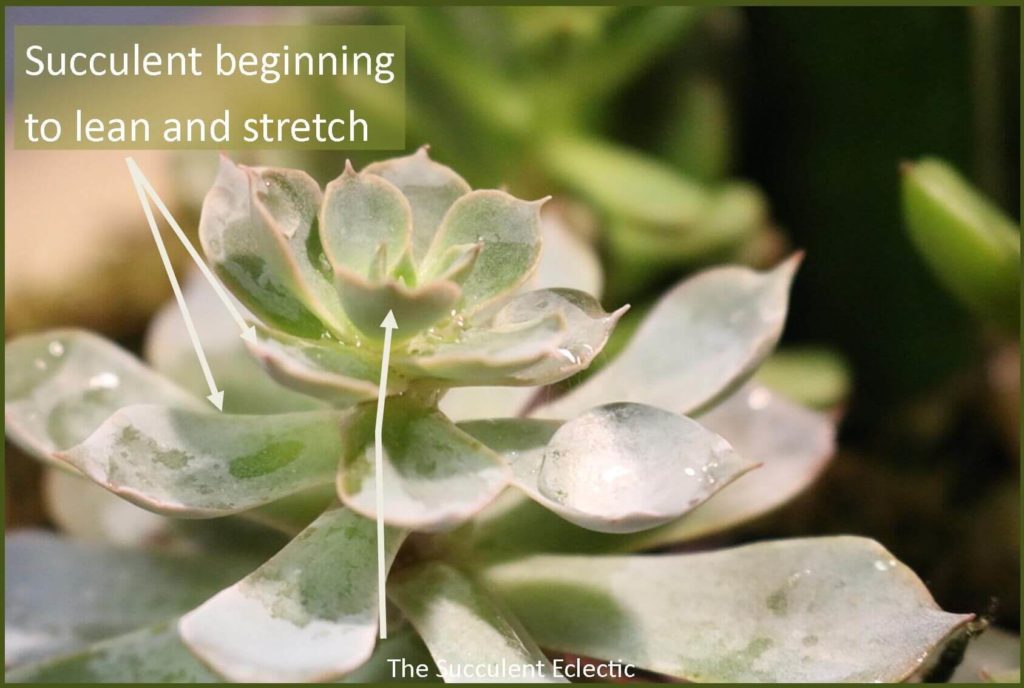
With time and attention, you’ll soon learn to recognize the clear signals your succulents give of their needs. When you recognize and act on the early signs of succulent problems, your care will improve immensely. Feel free to ask any questions — I am here to help! Just leave a comment and I will get right back to you.
Because life is just better with succulents!

P.S. For more succulent care information and DIYs, please subscribe to The Succulent Eclectic! I’ll send you my FREE e-course, 7 Steps to Succulent Success!
P.P.S. Why not join my Facebook Group for succulent lovers? We talk about succulent care, propagation, succulent identification, and design. It’s a warm and welcoming group that would love to meet you!
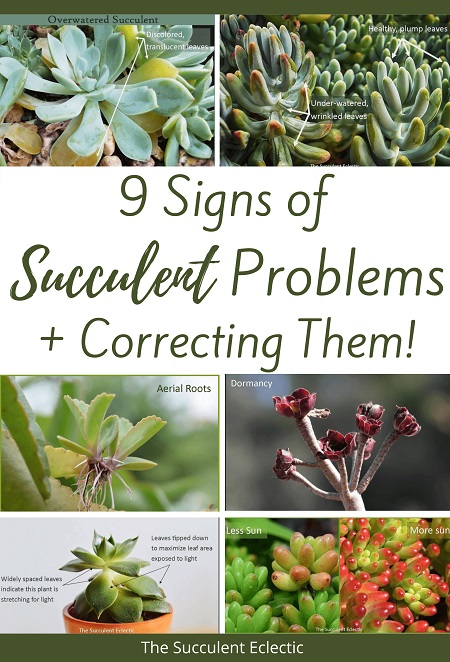
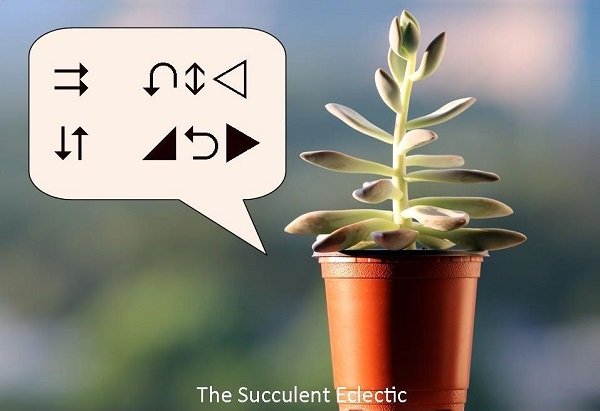
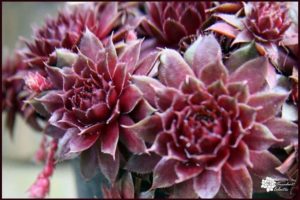
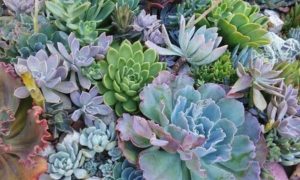
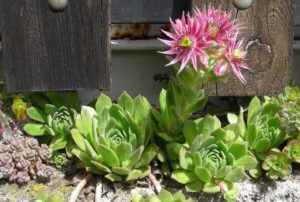
my echvera succulent get plenty of light and sun. why does it strech.
Hi Robin,
First, some upward growth isn’t stretching. It is just what the plant needs to do. If your succulent in growing in full sun, you may be seeing blooms develop.
But if it is indoors, what seems like “plenty” of light to you, just isn’t enough for your succulent. Modern windows cut out a lot of the non-visible spectrum of light that plants need.
If you’d like to send me a picture of your succulent, I would be happy to guide you further. Write to me at Kat [at] the succulent eclectic [dot] com.
Thanks!
~Kat
how big of a pot should I plant my succulent in?
Hi Robin,
It really depends upon the size and type of succulent you have. Many succulents have shallow roots, and do well in shallow pots. But some, like Haworthias, have really robust root systems that need more depth. I recommend you choose a pot about a thumb’s width wider than the size of your plant’s top growth, all the way around it. That way, you won’t have a lot of empty soil that retains water.
Happy gardening!
~Kat
Can you tell me more about how you improve air circulation for a plant? I have several plants that develop edema when I move them from inside to outside in the spring/summer. I always assumed they were getting burned by the full on sunlight. Inside they have grow lights but outside it is the unrelenting southwest sun. FYI, I’m a chronic over-waterer. : (
Hi Marielle,
There are two primary ways to improve air circulation around your plants:
1 – Don’t crowd them. Too many plants tucked close together, especially below an overhang or another shelf makes it really hard for the air to circulate.
2 – Don’t tuck the plant into a corner, where it only has fresh air coming from a narrow range of directions. Do you know what I mean? On top of a wall surrounded by fresh air is ideal. The more directions from which fresh air can approach, the better.
Indoors, where space is at a premium, consider moving the stressed plant out of the corners, and away from other plants. Even lifting it a bit above other obstructions can make a good difference. If you can move it closer to any drafts – that is all the better. Varying plant heights on plant stands can really help. A small fan blowing nearby – not directly on the plant, but stirring the air nearby – is excellent.
I hope this helps the airflow for your plants!
For your chronic overwatering – I have a theory it is sort of a self-soothing ritual for you. You love your plants and really want them to know it! Believe me – I’ve been there, and I totally relate! I have another blog post for you to read that I think might help: https://thesucculenteclectic.com/how-to-care-for-succulents-beyond-watering/
~Kat